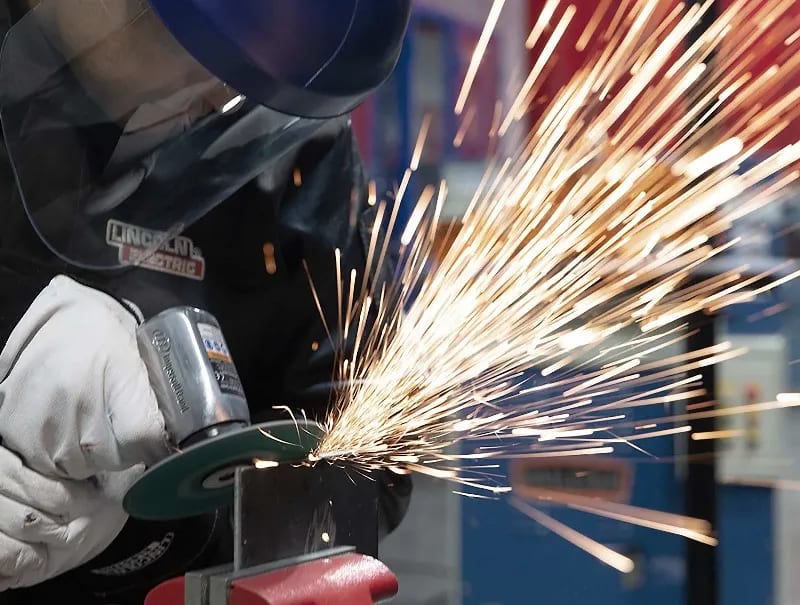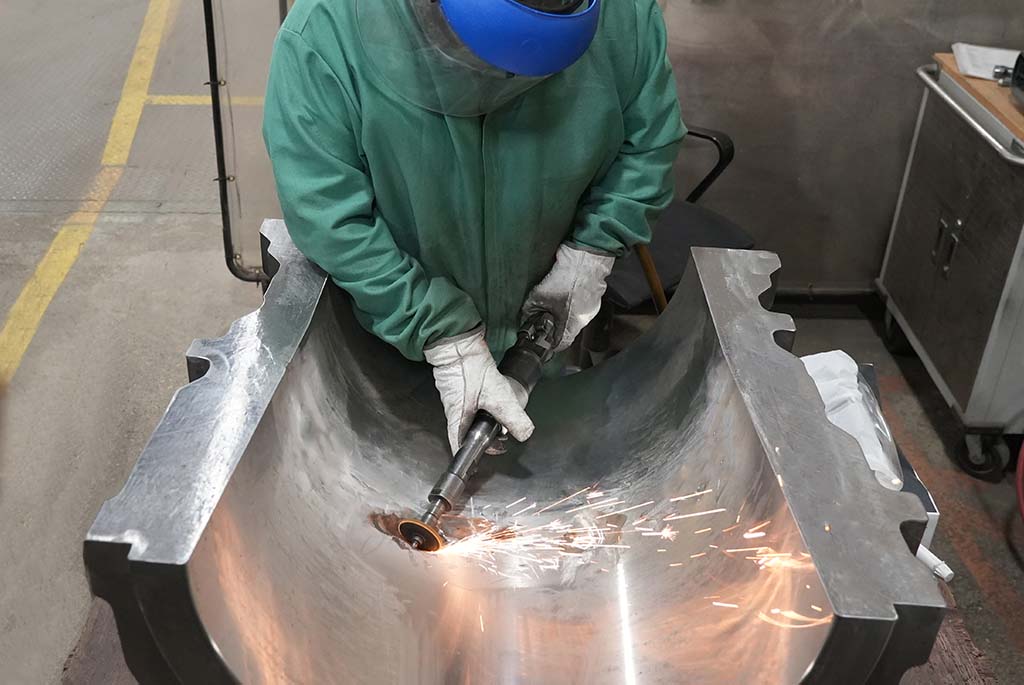Steps for perfect fusion with Montana Mobile Welding and Repair Belgrade Fabrication
Wiki Article
Common Welding Repair Work Issues and How to Address Them Successfully
Welding repair work usually run into a series of problems that can threaten the honesty of the end product. Usual issues include poor penetration, porosity, and misalignment, to name a few. Each defect provides unique difficulties that need particular techniques for resolution. Comprehending these problems is necessary for welders intending to enhance their skills and results. This conversation will certainly explore these common welding fixing concerns and reliable approaches to resolve them.Poor Infiltration
Inadequate infiltration occurs when the weld metal fails to fully fuse with the base material, resulting in weak joints and potential structural failings. This concern typically stems from insufficient warmth input, wrong electrode angle, or improper welding rate. Welders may come across poor infiltration because of a miscalculation of the required specifications for a details material density or type. In addition, contamination on the base product's surface can impede effective bonding, aggravating the trouble. To attend to inadequate infiltration, welders must guarantee appropriate setups on their devices and maintain a tidy job surface area. Routine evaluation of welds is suggested to determine any type of deficiencies early, enabling for timely modifications and the avoidance of jeopardized structural honesty in bonded assemblies.Porosity
Porosity is a typical flaw in welded joints that materializes as little gas bubbles caught within the weld metal. This defect can endanger the integrity of the weld, resulting in lowered toughness and potential failing under tension. Montana Mobile Welding and Repair Fabrication. Porosity commonly develops from contamination, wetness, or inappropriate welding strategies, which permit gases to run away right into the liquified weld pool. To address porosity, welders need to guarantee appropriate surface preparation, preserve a clean functioning setting, and use suitable welding specifications. Additionally, picking the best filler product and securing gas can reduce gas entrapment. Normal assessment and testing of welds can assist determine porosity early, ensuring timely rehabilitative actions are taken, consequently preserving the quality and reliability of the welded frameworkImbalance
Imbalance in welding can arise from different aspects, including incorrect arrangement and thermal growth. Comprehending the source is vital for efficient resolution. Numerous improvement strategies are offered to realign parts and assure structural honesty.Reasons of Imbalance
Welding imbalance usually stems from a selection of underlying issues that can endanger structural honesty. One key reason is incorrect fit-up of elements prior to welding, which can result in gaps and unequal surfaces. Variants in thermal expansion during the welding procedure can likewise lead to distortion, specifically if the products being joined have various coefficients of expansion. Additionally, inadequate clamping and fixturing might fall short to hold components securely in place, resulting in movement during welding. Inadequately kept tools, consisting of welding machines and devices, might present variances in the weld bead, more adding to imbalance. Lastly, operator error, originating from inadequate training or experience, can likewise play a substantial function in creating misaligned welds.Improvement Methods Available
Dealing with imbalance properly requires a combination of corrective methods customized to the specific issues handy. One typical approach is the use of jigs or fixtures to hold parts in the correct position throughout welding, guaranteeing constant placement. Furthermore, preheating the products can help in reducing distortion and improve fit-up. For substantial imbalance, mechanical adjustment techniques, such as utilizing hydraulic jacks or clamps, can be utilized to deal with the setting prior to welding. Post-weld warm treatment may likewise be needed to ease anxieties triggered by imbalance. Ultimately, mindful evaluation and change throughout the setup stage can avoid imbalance concerns from ending up being significant problems, advertising a smoother welding procedure and boosting total architectural stability.Distortion
Distortion is a common challenge in welding that can occur from various variables, including unequal heating & cooling. Recognizing the root causes of distortion is crucial for carrying out effective prevention techniques. Resolving this problem not only boosts architectural honesty yet likewise boosts the overall quality of the weld.Root causes of Distortion
When subjected to the intense warm of welding, materials frequently undergo modifications that can bring about distortion. This phenomenon mostly develops from thermal expansion and contraction throughout the welding procedure. As the weld location warms up, the material expands; upon air conditioning, it contracts, which can create internal stresses. Additionally, uneven home heating throughout a work surface can exacerbate these stresses, causing warping or flexing. The kind of product likewise plays a considerable duty; steels with differing thermal conductivity and coefficients of expansion may react in different ways, resulting in unforeseeable distortions. Additionally, bad joint design and inadequate fixturing can contribute to misalignment throughout welding, increasing the likelihood of distortion. Comprehending these causes is important for effective welding fixing and avoidance methods.Prevention Techniques
Efficient avoidance techniques for distortion throughout welding focus on controlling warm input and guaranteeing proper joint style. Maintaining a consistent warm input assists to decrease thermal expansion and tightening, which can bring about distortion. Utilizing techniques such as pre-heating the work surface can also decrease the temperature gradient, promoting consistent home heating. Furthermore, picking proper joint styles, such as T-joints or lap joints, can boost stability and reduce stress focus. Implementing correct fixturing to secure the workpieces in position further help in maintaining alignment during the welding process. Staggered welding sequences can distribute warmth extra uniformly, preventing local distortion. By applying these approaches, welders can substantially decrease the probability of distortion and enhance the overall quality of click here now their welds.Fracturing
Cracking is an usual issue experienced in welding fixings, usually arising from various variables such as improper air conditioning rates, material choice, or poor joint prep work. The event of cracks can greatly compromise the honesty of the weld, causing possible failings during procedure. To resolve this concern, welders need to first assess the root creates, ensuring that materials are compatible and properly selected for the specific application. Furthermore, controlling the air conditioning price during the welding process is vital; quick air conditioning can generate stress and cause fracturing. Correct joint design and prep work also add to decreasing the danger. Carrying out these techniques can boost weld top quality and durability, inevitably minimizing the likelihood of fracturing in ended up weldments.
Insufficient Fusion
A substantial concern in welding repairs is insufficient blend, which happens when the weld steel Our site does not effectively bond with the base material or previous weld passes - Montana Mobile Welding and Repair Belgrade Fabrication. This issue can bring about weak points in the joint, possibly compromising the stability of the bonded structure. Aspects adding to insufficient blend consist of inadequate heat input, improper welding technique, and contamination of the surfaces being signed up with. To address this issue efficiently, welders ought to guarantee correct pre-weld cleansing and surface area prep work, as well as readjust their welding criteria to accomplish ample infiltration and combination. Normal assessment throughout the welding process can likewise aid determine incomplete fusion early, enabling timely restorative steps to boost the total quality of the weldOverheating
While welding fixings can enhance structural honesty, overheating presents a significant obstacle that can result in material degradation. Excessive warm during welding can change the mechanical homes of steels, leading to minimized strength, raised brittleness, and bending. This sensation is especially vital in high-stress applications where structural reliability is critical. Recognizing getting too hot can include aesthetic examinations for discoloration or distortion, as well as monitoring temperature level during the welding process. To alleviate the risks connected with overheating, welders should use proper techniques, such as controlling heat input, readjusting traveling speed, and making use of suitable filler materials. In addition, carrying out pre- and post-weld warmth therapies can aid recover material homes and boost the total top quality of the repair work, guaranteeing lasting performance and safety and security.Regularly Asked Questions
What Are the Usual Indicators of a Welding Issue?

Just How Can I Check My Welds for Top quality?
To check welds for top quality, one can use aesthetic assessments, ultrasonic screening, and radiographic methods. Each technique guarantees architectural honesty, identifies problems, and confirms adherence to defined standards, ultimately enhancing the reliability of the bonded joints.What Safety and security Preventative Measures Should I Take While Welding?
When welding, one need to focus on security see this page by putting on proper personal protective equipment, making certain proper air flow, safeguarding flammable products away, preserving a clean workspace, and being aware of surroundings to avoid injuries and mishaps.Can I Fix a Weld Without Remodeling the Entire Joint?
Fixing a weld without remodeling the whole joint is possible, depending upon the damages (Montana Mobile Welding and Repair Belgrade Fabrication). Methods such as grinding, including filler product, or utilizing a welding procedure can successfully deal with certain flaws while protecting the bordering structureWhat Devices Are Important for Effective Welding Fixes?
Essential devices for efficient welding repairs consist of a welding equipment, wire brush, mill, safety equipment, clamps, and filler products. Each tool plays a crucial role in making sure high quality and safety and security throughout the repair work process. Porosity normally occurs from contamination, wetness, or improper welding techniques, which permit gases to escape right into the molten weld pool. Poorly kept devices, consisting of welding equipments and devices, may present disparities in the weld bead, additional adding to misalignment. When subjected to the extreme warmth of welding, materials usually undergo changes that can lead to distortion. Fracturing is an usual concern encountered in welding repairs, often resulting from various aspects such as inappropriate air conditioning prices, material selection, or insufficient joint preparation. A substantial issue in welding repair work is insufficient fusion, which happens when the weld steel does not appropriately bond with the base product or previous weld passes.Report this wiki page